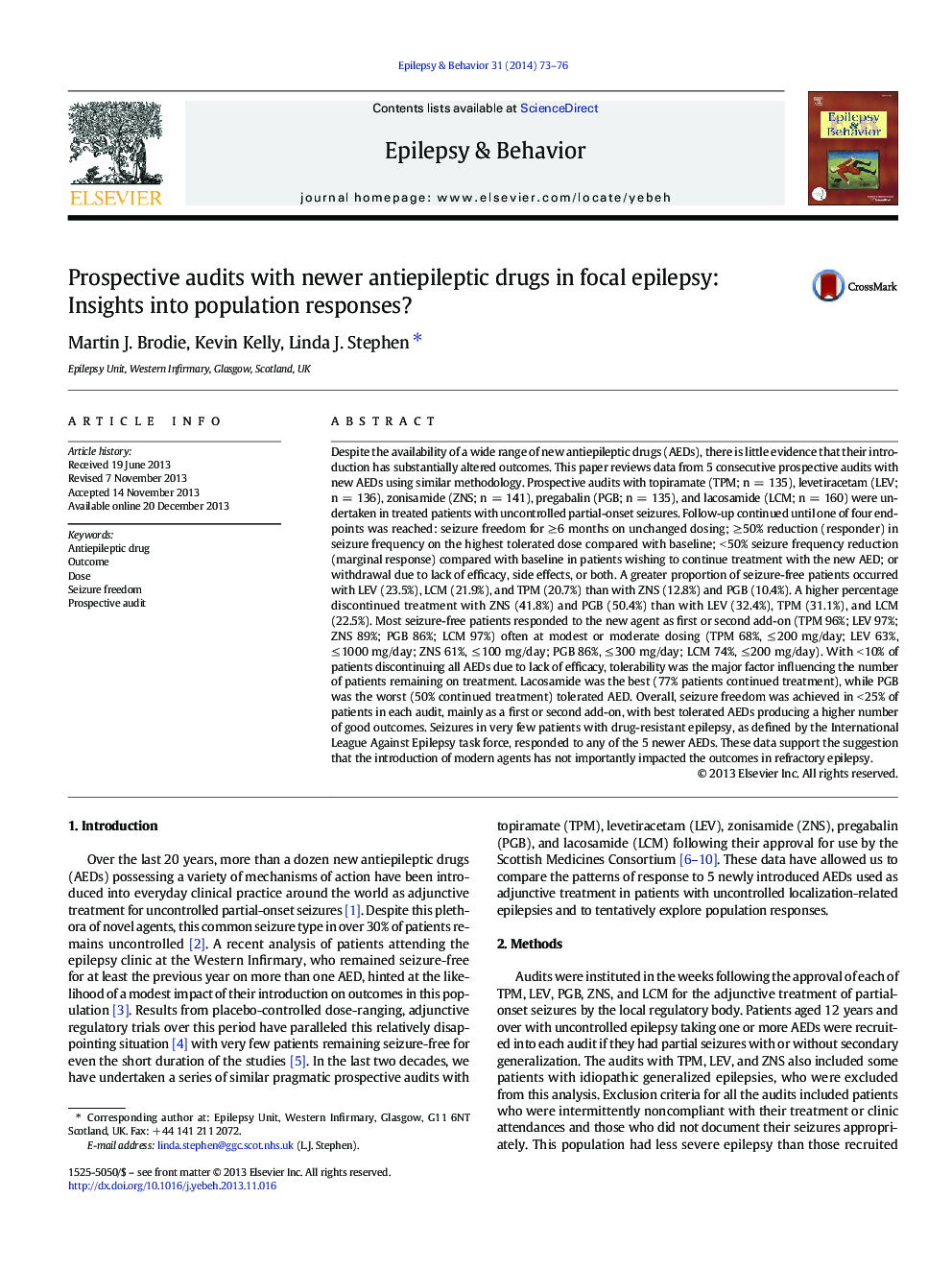| کد مقاله | کد نشریه | سال انتشار | مقاله انگلیسی | نسخه تمام متن |
|---|---|---|---|---|
| 6012517 | 1579858 | 2014 | 4 صفحه PDF | دانلود رایگان |
عنوان انگلیسی مقاله ISI
Prospective audits with newer antiepileptic drugs in focal epilepsy: Insights into population responses?
ترجمه فارسی عنوان
ممیزی های آینده با مواد مخدر جدید ضد صرعی در صرع کانونی: بینش های مربوط به پاسخ های جمعیتی؟
دانلود مقاله + سفارش ترجمه
دانلود مقاله ISI انگلیسی
رایگان برای ایرانیان
کلمات کلیدی
داروهای ضد صرع، نتیجه دوز، آزادی تشنج ممیزی نهایی
موضوعات مرتبط
علوم زیستی و بیوفناوری
علم عصب شناسی
علوم اعصاب رفتاری
چکیده انگلیسی
Despite the availability of a wide range of new antiepileptic drugs (AEDs), there is little evidence that their introduction has substantially altered outcomes. This paper reviews data from 5 consecutive prospective audits with new AEDs using similar methodology. Prospective audits with topiramate (TPM; n = 135), levetiracetam (LEV; n = 136), zonisamide (ZNS; n = 141), pregabalin (PGB; n = 135), and lacosamide (LCM; n = 160) were undertaken in treated patients with uncontrolled partial-onset seizures. Follow-up continued until one of four endpoints was reached: seizure freedom for â¥Â 6 months on unchanged dosing; â¥Â 50% reduction (responder) in seizure frequency on the highest tolerated dose compared with baseline; < 50% seizure frequency reduction (marginal response) compared with baseline in patients wishing to continue treatment with the new AED; or withdrawal due to lack of efficacy, side effects, or both. A greater proportion of seizure-free patients occurred with LEV (23.5%), LCM (21.9%), and TPM (20.7%) than with ZNS (12.8%) and PGB (10.4%). A higher percentage discontinued treatment with ZNS (41.8%) and PGB (50.4%) than with LEV (32.4%), TPM (31.1%), and LCM (22.5%). Most seizure-free patients responded to the new agent as first or second add-on (TPM 96%; LEV 97%; ZNS 89%; PGB 86%; LCM 97%) often at modest or moderate dosing (TPM 68%, â¤Â 200 mg/day; LEV 63%, â¤Â 1000 mg/day; ZNS 61%, â¤Â 100 mg/day; PGB 86%, â¤Â 300 mg/day; LCM 74%, â¤Â 200 mg/day). With < 10% of patients discontinuing all AEDs due to lack of efficacy, tolerability was the major factor influencing the number of patients remaining on treatment. Lacosamide was the best (77% patients continued treatment), while PGB was the worst (50% continued treatment) tolerated AED. Overall, seizure freedom was achieved in < 25% of patients in each audit, mainly as a first or second add-on, with best tolerated AEDs producing a higher number of good outcomes. Seizures in very few patients with drug-resistant epilepsy, as defined by the International League Against Epilepsy task force, responded to any of the 5 newer AEDs. These data support the suggestion that the introduction of modern agents has not importantly impacted the outcomes in refractory epilepsy.
ناشر
Database: Elsevier - ScienceDirect (ساینس دایرکت)
Journal: Epilepsy & Behavior - Volume 31, February 2014, Pages 73-76
Journal: Epilepsy & Behavior - Volume 31, February 2014, Pages 73-76
نویسندگان
Martin J. Brodie, Kevin Kelly, Linda J. Stephen,
